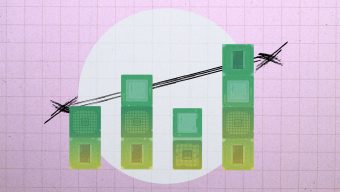The speed of technological and social transformation has skyrocketed. For centuries, the growth of the prosperity index was strictly linear, but things have changed in the age of digital transformation. Historical data show that most of the economic development that has ever taken place has been concentrated in the last 150 years. In just the past few years, however, with the widespread adoption of new technologies across the entire population, the pace of change has increased like never before. Artificial intelligence is now capable of solving puzzles like the Rubik’s Cube in the blink of an eye. Machines will continue to have an outsize technological impact on the workforce, creating ever-greater uncertainty regarding the future of work and causing cracks to appear in the international liberal order.
Questioning the political paradigm
After the Cold War, many books and studies warned of the “end of history.” The Japanese-American political scientist Francis Fukuyama theorized that the arrival of the free market and globalization marked the end point of human development and that these trends and political models would eventually obliterate all others. The question raised back then has returned to the fore: What is the optimal political model for today’s digital age?
The new paradigm is driven by two fundamental forces. One is international; we are under siege by external movements from China and Russia. The other is internal; people living under the liberal order are growing increasingly resistant to the main principles of liberalism. Many groups belonging to this liberal architecture are starting to be seen as the precariat of the West, due to their technological and occupational disconnection.
In practically all advanced economies, talent concentration has been accompanied by wage concentration.
China and Russia are altering the liberal order
The rise of China as an economic power is highly relevant to this global debate. Knowledge clusters are proliferating in China. Rather than democratizing the country, however, this process has concentrated production within China’s borders. A talent void is now opening up on the periphery. Strange though it may seem, there exists a type of technical knowledge regarding specific industrial practices that does not travel in cyberspace.
At the demographic level, rural areas are steadily losing inhabitants. People are moving to cities because that’s where the knowledge is. The business world is facing a similar trend, with productivity becoming concentrated in just a handful of companies.
Through studies launched in 2015, the OECD has discovered that a small minority of digital companies—the so-called frontier firms, some of which are located in China—have increased their productivity by 30%, while the vast majority have not managed to grow in this regard. The conclusion is clear: there is no dissemination of productivity in today’s economy. The rise of China scares the United States and is generating a new technological cold war.
Through its actions in the digital realm, Russia has become the other great disrupter of the existing order. Intelligence and disinformation operations have shaken the international liberal architecture. Russia’s goal is to invisibly sow doubts regarding the institutions of intermediation and undermine society’s capacity to agree on collective truths. And once again, all this is happening against the backdrop of technology.
Many groups belonging to this liberal architecture are starting to be seen as the precariat of the West, due to their technological and occupational disconnection.
Transformation of employment: the explosion of inequality
The next step is for disruption to reach the job market. Industry used to be the epicenter of revolutionary changes, but nowadays the most drastic changes are taking place in the service sector. Today, these changes are unfolding much more rapidly, with consequences for employees all over the world. As professional categories are replaced by automated functions and skills, the workforce will shift towards processes less exposed to machine-friendly tasks.
Over the past few years, this phenomenon has caused a divergence between productivity and salaries, in contradiction of the prevailing theory of economic development of the 20th century. In practically all advanced economies, talent concentration has been accompanied by wage concentration. In the United States, despite the economic growth of the country as a whole, 70% of households have not seen any real income gains in the past 30 years. But there is another possible interpretation: since the economy is at close to full employment, all workers are affected by a generalized trend towards precariousness driven by strong downward pressure on wages. As Thomas Piketty has argued, the growth of inequality is palpable.
Meanwhile, newly created jobs—more than two million in Europe alone—have gone unfilled because companies cannot find candidates with the right skills. According to McKinsey, if the technologies available today were to fully penetrate the economy, more than a billion jobs would disappear worldwide. These sorts of factors are posing new challenges around companies and technology. Until corrective solutions can be found, we will be stuck in this moment of turmoil. The solutions may involve local public measures to give each country a better chance of generating frontier firms that offer high-quality jobs. It would also be interesting to develop a new social contract that took the education system into account and adapted it to the reality of the job market. In short, we still have a long way to go.
© IE Insights.











